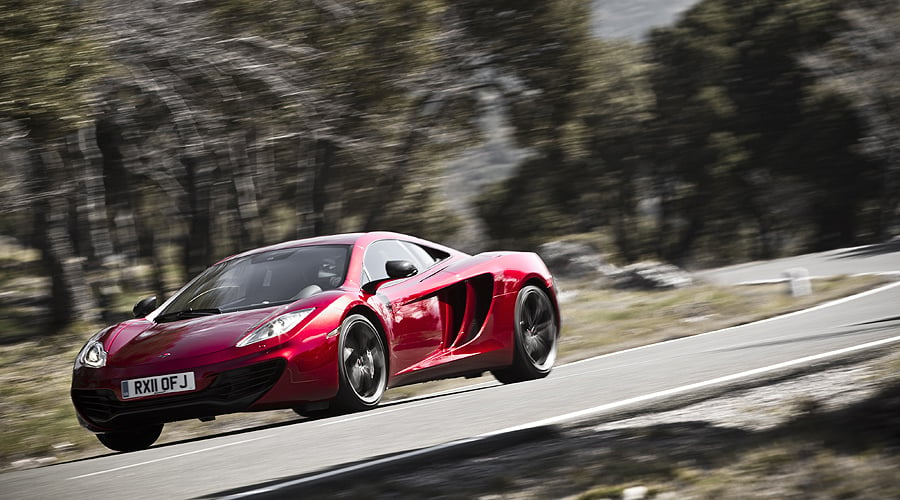
Have expectations ever been higher for a new supercar? asks John Simister. Multiple Formula One championships, the horizons-busting McLaren F1 even-more-supercar (central driving seat, gold-film bulkhead coating and all the rest), a company reputation for almost obsessive perfection… it was never going to be easy.
The new MP4-12C is not a McLaren F1 reinvented for the new millennium. It's much more accessible than that, with thousands planned for production in the next few years (instead of 106) and selling at a Ferrari 458-ballpark £168,500 before you start the visible carbonfibre accessorisation. It has a 3.8-litre twin-turbo V8 instead of a naturally aspirated V12, and just two seats instead of three. The F1 was a talisman only. The MP4-12C is a full production car to be judged on full production-car terms.
Its closest rival is undoubtedly that Ferrari, also powered by a V8 engine with 180deg crankshaft throws (so it blares/howls/shrieks instead of bellowing the beating bluster of a conventional V8). Comparisons are inevitable on every level, from Formula One rivalry to subtle interpretive differences in essentially the same mid-engined supercar concept. Both have double-clutch transmissions and double-wishbone-based suspensions, but the McLaren's structure is built around an ultra-light carbonfibre tub (made by CarboTech of which we'll be hearing much more in coming years) rather than an aluminium monococque. The McLaren is slightly more compact, too, if only slightly lighter at 1434kg.
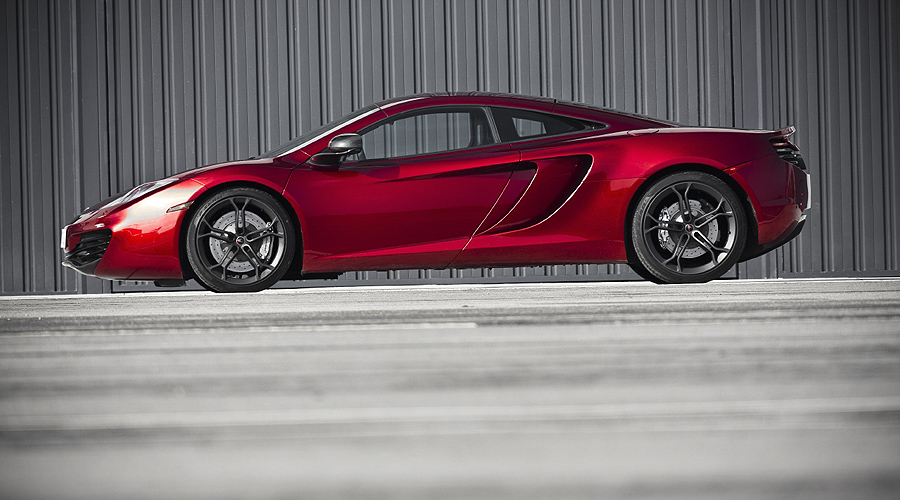
The headline power and pace figures also trump the Ferrari's. They make almost surreal reading: 600bhp at 7000rpm, 443lb ft of torque all the way from 3000rpm to that power peak, a 205mph top speed, 0-62mph in 3.3sec and 0-124mph in 9.1, the ability to stop – with cast iron brakes, not carbon-ceramic – from 62mph in just 100ft. All this with a 24.2mpg official 'combined' fuel thirst and a 279g/km CO2 score. Cake possessed and consumed simultaneously.
I arrive at McLaren's Technology Centre, next to the new and still not-quite-finished MP4-12C factory. This factory is functioning but storage of finished 12Cs is a problem, so they are accumulating inside the Technology Centre's Norman Foster-designed spaces, hiding under immaculate black shrouds pending despatch. I down a quick coffee before departing in the MP4-12C, accompanied by a friable pain au chocolat. It crumbles in my hand, flakes float to the immaculate floor and I feel irrationally guilty. Not for long; an efficient lady with a dustpan and brush appears by magic and the evidence vanishes.
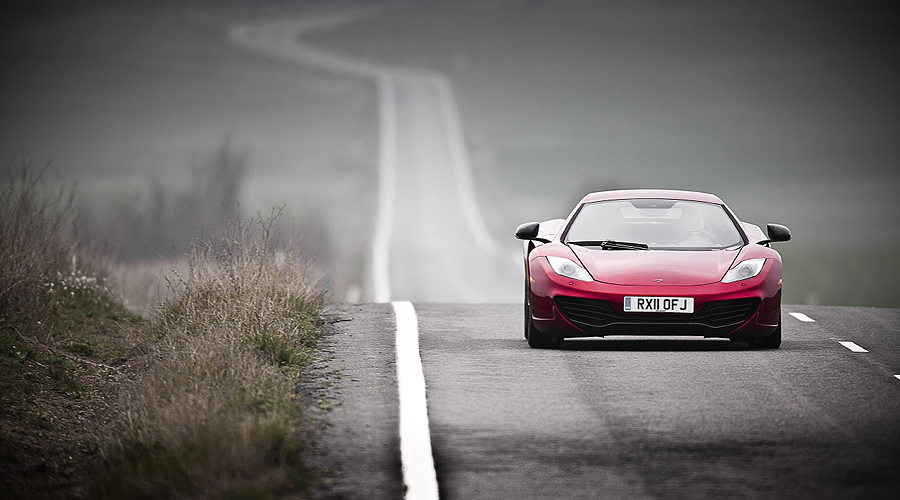
Now into the MP4-12C (a rather clumsy name, it must be said, for a very unclumsy car). The up-and-out door is opened by stroking a hand back under the final foot or so of the door's upper air-intake lead-in; there's no visible or feel-able switch. Installed in the driver's seat, electrically adjustable in several directions, I have a fine view forward over the low dashboard. It reminds me of that other ultra-friendly supercar (or semi-supercar), the Honda NSX which informed a good chunk of Gordon Murray's thinking when he created the McLaren F1.
This airiness bodes well for confident control and urban traffic-awareness. It's one of the ways McLaren has tried to make the MP4-12C a practical proposition for everyday use, like a Porsche 911 or an Audi R8. Time to fire up: a press of the central start button, directly below the touch-screen display panel and the single central air vent, triggers a deep, slightly uneven rumble like that of nothing else currently made. This is an engine designed by, and unique to, McLaren with help from engineering consultancy Ricardo, and it's almost lost in the engine bay because its dry-sump lubrication system lets it sit very low.

I pull the right-hand gearshift paddle to select first gear. Actually the two paddles are in one piece, which rocks on a central pivot. The action is unusually firm, enough to let you discern two stages to the movement of which the first stage is 'Pre-Cog' which pre-loads the clutch of the next predicted gear so that the shift, when it comes, is ultra-rapid. The electric parking brake – I'd have preferred a regular manual one for fine control when manoeuvring – releases and suddenly, for the first time in my life, I'm driving a McLaren.
It's a magic moment, even if the soundtrack I'm getting at this initial gentle amble is that of a Porsche 911. This might be surprising, given the two cars' radically different engine configurations, but the deep background hum overlaid by the whine of ancillary drives is uncannily familiar. Other whines come from the air-con system, and they're too intrusive.
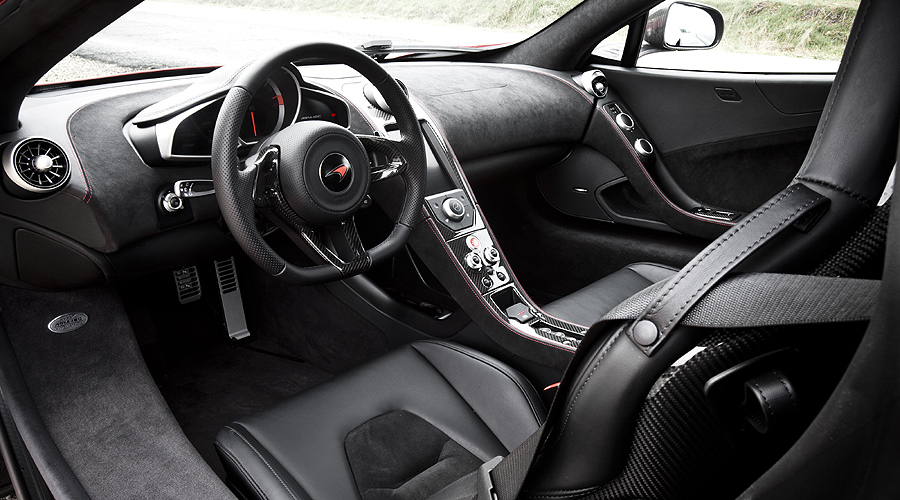
Next impression? The ride is extraordinarily supple at town speeds, with the suspension and powertrain set to Normal. This is the default setting; pressing the Active button lets you select Normal, Sport or Track for each of these domains via two rotary switches. This suppleness comes from the active dampers and the lack of anti-roll bars, the anti-roll, anti-dive and anti-squat functions being handled by a stiffening of damper rate and the fact that the dampers are interconnected with each other via valves, front to back and left to right. Previous-generation Audi RS4 meets Morris 1100 here.
Big ridges can provoke a thump, but otherwise this is a new world of supercar suppleness. The engine is similarly civilised at ambling speeds, burbling away contentedly in the high gears the seven-speed gearbox, with an an electro-mechanical eye on the CO2 figures, is keen to select when left in Automatic mode. Now we'll enact a personality change. Track mode for suspension and powertrain, 'manual' button pressed, downshift to second, foot to floor.
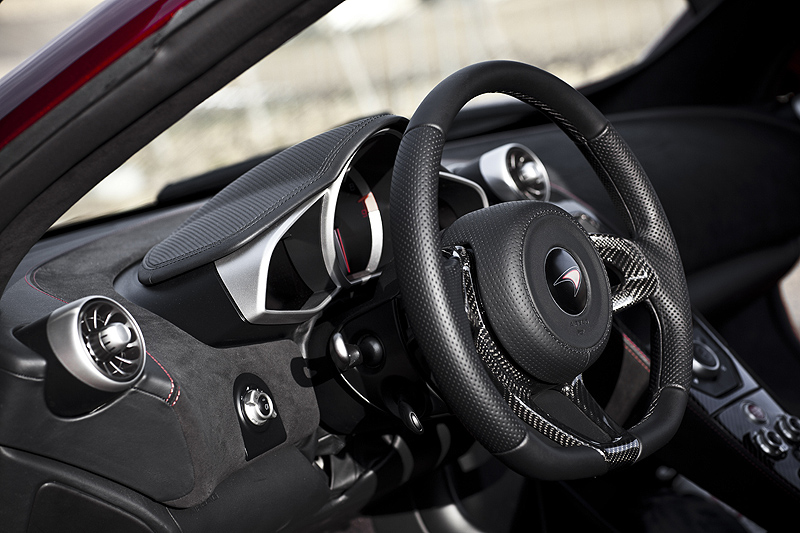
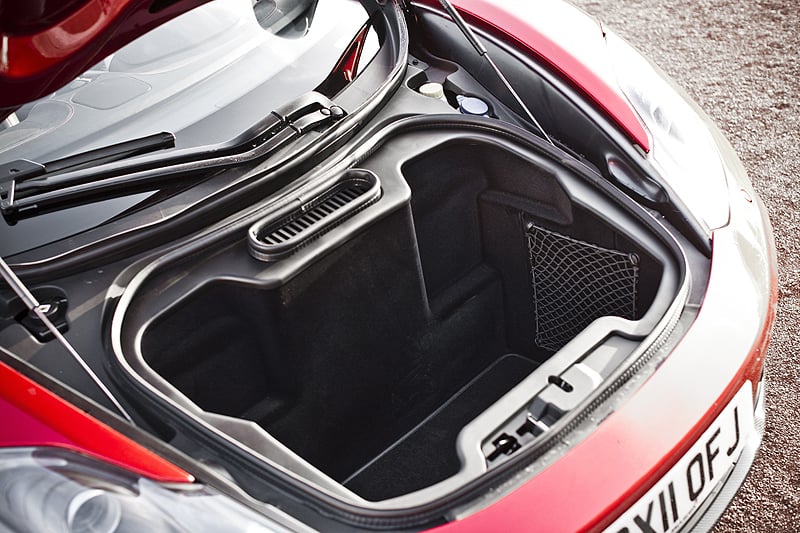
An aural explosion aft pins me to the seat and fires the McLaren up the road as though weightless. There has been no detectable delay in the turbochargers' energising, and the acceleration is of savage ferocity. The revs fade at about 8500 having reached a penetrating bellow underlaid by a slightly dirty beat, a sound more soulful than I expected. This is a monstrously rapid car, its accelerative surge relentless as the gears are snicked through; the horizon suddenly seems very close and I dab the rather snatchy brakes (upon which, at these speeds, the rear air brake pops up to aid rear-wheel braking effort and block my rear view). Low-end thrust, high-revs ballistics, this engine has it all.
Yet, for all that, the MP4-12C doesn't feel intimidating. Instead it feels light, nimble, friendly, planted on the road, ready to respond to your commands and not take over. The engine's Track mode's aural drama comes from the opening of valves in the intake system, allowing a diaphragm to vibrate and release the sound pulses into the cabin, and after a while your ears might tire of this and you settle for Sport, which retains most of the throttle-alacrity and gearshift eagerness. Your mood changes and the McLaren matches it.
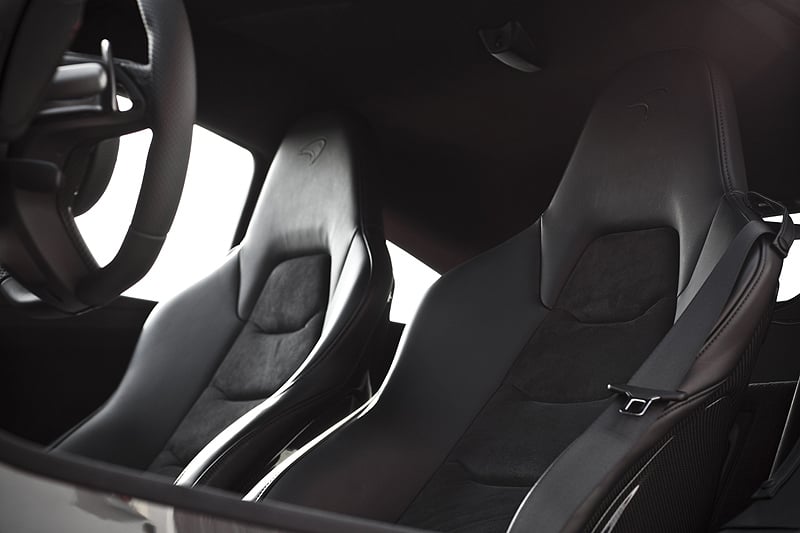
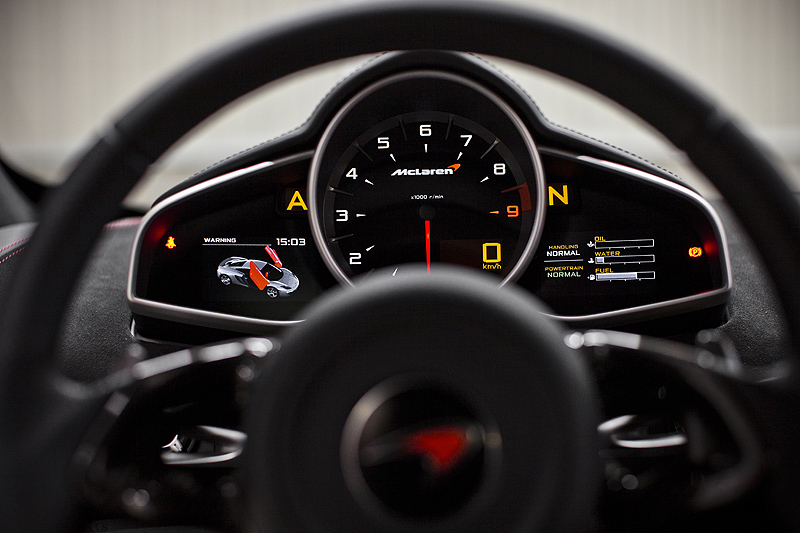
The same goes for the suspension settings. Track is certainly firm but the damping is still superb, making the MP4-12C less jittery than, say, a Sport-enabled Porsche 911 GT3 on poor roads. However, the McLaren's own Sport setting is an excellent compromise with slightly sharper responses than Normal but still a sense of suppleness and flow. But there's one aspect of the MP4-12C's dynamic demeanour that leaves you feeling a bit detached from the action: the steering.
Now, you might have read some earlier reports in the specialist motoring press which comment on this aloofness, citing fractional delays in the active dampers' stiffening-up as the reason for a momentary tactile uncertainty when turning into a bend. I don't buy this; the McLaren is never less than completely accurate and faithful to every steering movement, but the problem in these very early test cars is friction in the steering mechanism. It's within the upper column assembly, it filters out subtle messages and spoils the self-centring, and the engineers are on the case. It's a surprising error and it may have sullied the MP4-12C's initial reputation.
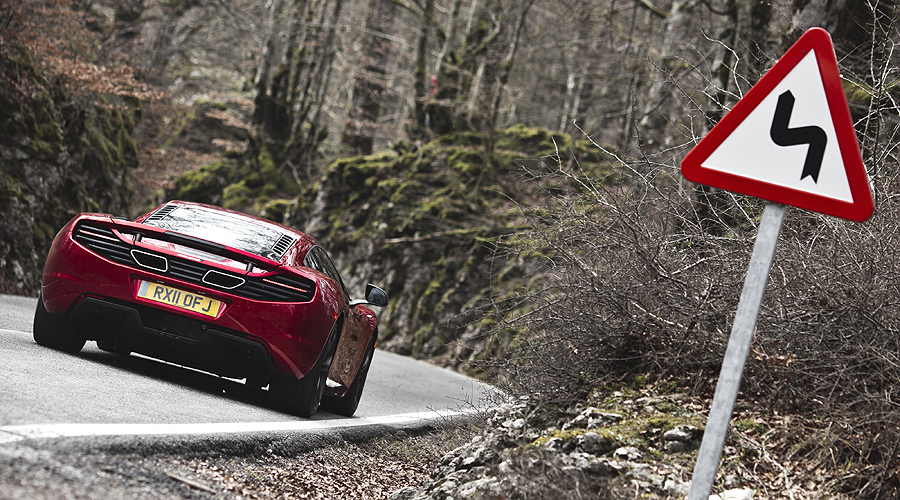
Get past this, and the McLaren is a fabulously wieldy, grippy, low-inertia machine able to devour your favourite roads with uncommon relish. So is it, crucially, as much fun as a Ferrari? It has a little less visual drama, but such discretion is your ally when you're having a rousing drive. Its cabin is starker and simpler, which I like even if the finish doesn't quite square with the price. (The exterior finish of the aluminium roof, bonnet and wings and the carbonfibre panels elsewhere is impeccable, by the way, and there's a decent boot up front, but a ledge to stop items falling off the rear shelf would be good. Especially as the driver's seat's automatic rearward entry/exit powering is powerful enough to crush the contents of your fallen-off jacket, as I discovered.)
And yes, the McLaren's demeanour is less dramatic than the Ferrari's, less edgy and attention-seeking, somehow cooler and more desirable because of that. It's probably easier to live with every day over big distances, too. In this it has shades of an Audi R8 but moved to a higher level of consciousness. Compare the approaches of the Ferrari and McLaren Formula One teams to their tasks, and apply all of it to the road cars. Then imagine what a Ferrari 458 would be like if McLaren had created it. The MP4-12C is that car. Precisely.
Text: John Simister
Photos: McLaren
ClassicInside - The Classic Driver Newsletter
Free Subscription!










